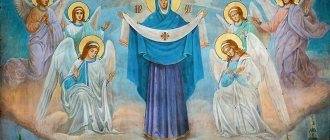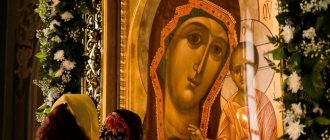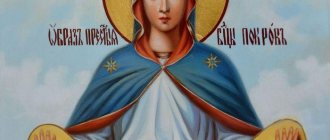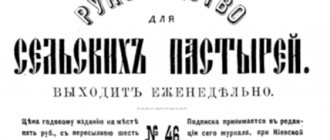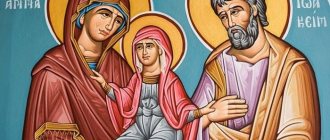There are a large number of Orthodox shrines in the world that are known for their miraculous properties, as well as other phenomena. Many believe that it is in such holy places that healings from the most complex ailments occur. There are many places that are famous for their wondrous stories about this, one might even say legends. Such holy places have become places of pilgrimage, where large numbers of believers come. They all pray and expect miracles to happen. Such a place as the Kanavka of the Blessed Virgin Mary in Diveevo is no exception.
Diveevo and Kanavka
Diveevo is a monastery that has become a place of pilgrimage for a large number of believers who ask for the most necessary things at the moment. The most famous miracle of this monastery is the Canal of the Blessed Virgin Mary. A large number of believers, as well as tourists, come to her.
The difference between them is that pilgrims know what to do and where to go. Tourists perceive this feature as another tourist spot for photographs. If you are not prepared for arriving at this place, then it will be difficult for tourists to see the wonders of the Canal of the Virgin. They can only contemplate temples, landscaped areas, beautiful landscaping and crowds of people who are constantly saying something under their breath.
So, the main shrine of the Seraphim-Diveevo Monastery is Kanavka. This monastery is considered the fourth inheritance of the Holy Mother of God. People come here to:
- gather strength,
- pray,
- spiritually cleansed
- will be healed from illnesses,
- ask for wishes to be fulfilled.
Gooseberry
When the sisters of the Diveyevo monastery were digging a holy ditch, Seraphim of Sarov ordered them to plant the slopes with gooseberries to strengthen the ditch and natural fence. In our time, during the restoration of the Kanavka, gooseberries were again planted on the slopes.
So, when the gooseberry grows, it is cut off. The cut branches are not thrown away, but are rooted or distributed to pilgrims.
It should be noted that there is an old rule - they don’t ask for anything in the monastery. But if they suddenly give you something or donate it, take it. This is a special grace. Especially if these are gooseberry branches from the Holy Canal. Take them and try to root them in your garden, country house, or just in a flower pot.
How did the Kanavka appear and what is it?
It is believed that Kanavka was the last will of the Queen of Heaven. Tradition says that in 1823 the Mother of God appeared to Father Seraphim. she showed him the place in Diveevo where it was necessary to build a monastery.
Where is Our Lady's Ditch? She also ordered to surround this monastery with a ditch and rampart. This is how the monastery appeared. A few days before Seraphim's death, the Kanavka was built.
Also read: Prayer to the Lord for protection and help
How does she look? This is a heptagon, the length of which along the perimeter is 777 m. During life, 6 sides were excavated, and on the seventh there should have been a large cathedral in honor of the icon of Our Lady “Tenderness”.
After the death of Father Seraphim, difficult times came for the monastery. Construction practically stopped and the ditch was not properly maintained; in addition, they even began to walk and drive along it. Over time, the revival of the monastery began and the ditch was cleared.
Since many believers came to this shrine, its fame spread far beyond the village. Flowers, grass and soil from this monastery are considered miraculous and healing.
Arrangement of the shrine
The Venerable Elder Seraphim of Sarov accomplished many spiritual feats and repeatedly witnessed the appearance of the Mother of God, who bestowed grace on him.
The official date of the next appearance of the Virgin Mary is considered to be November 25, 1825. Then the Mother of God ordered the elder to form a new community, which should be surrounded by a rampart.
We are talking about a mill community that began to operate the next year after the appearance of the Mother of God to the elder, but the holy ditch in Diveevo was in no hurry to appear.
Informative! Selecting icons based on a person’s date of birth
According to the elder himself, only novices from the monastery could dig, and lay people were allowed in only to fill the shaft and carry the earth. Of course, the creation of this landscape form required a certain feat from the novices, who already led a very ascetic existence.
Nevertheless, the elder was especially concerned about this matter; in fact, it completed his earthly journey. There is evidence from the novices themselves who saw him digging a ditch himself. It would seem that there is nothing strange, or rather, almost nothing, because the elder lived relatively far from the women’s monastery, but:
- as one of the ascetics says, she went out in the morning to the beginning of the ditch and saw Saint Seraphim, who had already dug a little and called her;
- then she decided to call the others to help, but when she returned, she saw only a hoe;
- on that very day, an ascetic remained in the skete with Seraphim of Sarov and clearly saw how he was in his home, that is, there was no way he could have ended up in Diveevo, moreover, he even wrote a letter to the monastery with the help of this ascetic.
This vision incredibly excited and inspired the women, after which the holy groove of the Virgin Mary was created in the shortest possible period.
Elder Seraphim himself died almost immediately after the completion of the miraculous construction. He blessed all believers to walk along the path that the Mother of God herself walked and read a prayer for Her.
External description
From the outside, the space looks very ordinary. Before the pilgrims appears an ordinary shaft, above which there is a landscaped path, and on the side there is that same groove. Its length is 777 meters. The length was chosen absolutely wisely, because in the Orthodox tradition, seven represents completeness and is a divine number.
Note! The number 666 is interpreted as a lack and incompleteness, the number of the devil, that is, deprived of divine fullness. 777 is a positive sacred symbol in the Orthodox tradition.
Use of holy land
Many believers try to take with them a small amount of land, which is considered holy and blessed.
Of course, the earth from the ditch can help believers, but this substance should not be considered something magical or magical.
In fact, in its composition and properties, a handful taken may be no different from one taken from the garden; the only difference here is the faith with which this earthen soil is accepted and used.
Note! Strong faith attracts the attention of the Lord, who with his immeasurable mercy sends grace and every consolation to the Orthodox in any matter.
Land is used in a variety of ways, but the most common are:
- mixing with holy water and using for drinking, of course, in reasonable homeopathic quantities;
- applying to sore parts of the body;
- use in the house, for example, some place it near the bed to protect themselves from the attacks of the demonic army while sleeping.
There may be other options for amulet use: some put a little in the foundation, others bury it around the perimeter of the house, some wear it in a pendant as an amulet.
I got into the car and went to pay my respects to Father Seraphim
It is fenced with a small fence, there is a stand next to it, and his photograph hangs. Father Seraphim always prayed before this image and died on his knees. The Mother of God is depicted without the baby Jesus, with her arms crossed on her chest and a gentle, barely noticeable smile.
Seraphim of Sarov loved this image very much and called it “Joy of all joys.” Nicholas II presented for this icon a very rich golden chasuble, decorated with jewelry - a halo, in the form of shining rays, consists of precious stones and pearls.
"We didn't ask for anything"
Many pilgrims also visit the monastery’s hermitages, of which more than twenty have been built since 1991. “We didn't ask for anything. “The Lord Himself gave everything into our hands,” says Mother Superior and gives just one example. — In the early 90s. the head of one of the rural administrations said that they have two grandmothers who are asking me to come. Two sisters, two old maids, Ekaterina and Anastasia . When we meet, they say to me: “Mother, how we waited for you, how we prayed to St. Seraphim!” And they show off their wealth - a large portrait of an old man on canvas, pre-revolutionary. They also had other treasures - 10 pairs of felt boots “farewell to youth”, 10 pairs of stockings and 5 thousand rubles saved from retirement. “We will give it all up, just take our church for restoration!” And there is a stone temple without windows, without a roof, as if after a bombing, birds fly inside. And the grandmothers keep asking: “Our village Avtodeevo is consonant with Diveevo.”
Article on the topic
Physicists and clerics.
Alexy II came to us , they took him to see this temple through the broken bricks and bird droppings... And a year later, His Holiness was already standing here on the pulpit. There was cleanliness and order all around. One of the grandmothers, Catherine, had a funeral service in this church, and the second, Anastasia, became a monk and lived out her life with us.” A special history is connected with the monastery cemetery. “Even 10 years ago it was an open field, but now a wooden church has been built there, a park has been laid out, and a pond with goldfish has been built. All this was done through the efforts of our benefactor Vyacheslav. He himself is a very religious person. And his main concern was to bring his father to faith. Through Vyacheslav’s prayers, the father repented and took communion before his death, and died reconciled with God. His grave was one of the first in the monastery cemetery. On his father’s memorable days (birth, death and angel day), Vyacheslav always comes to his grave, attends the service, reads the Psalter for the deceased - and this is 6 hours of continuous reading. He has such a charge of firmness of faith that I sometimes cite him as an example to my sisters.” Work on the restoration and arrangement of the Holy Canal. Photo: From the monastery archive
Let's sum it up
In order for a pilgrim who has arrived near Sarov to collect some land, he must certainly read a prayer while walking along the ditch itself. The standard option is to read “Rejoice to the Virgin Mary” 150 times in a row.
Some also point to the following prayers:
- "Our Father";
- “Open the doors of mercy for us”;
- "Virgin Mother of God, rejoice."
Each one is read at least fifteen times in a row, although you do not always need to follow any formal instructions, but you need to pray in such a way as to cultivate faith in yourself and feel the grace of the Lord.
Tips for visitors to religious sites
Even an unbeliever and unbaptized person should not perceive a visit to Orthodox sites as an ordinary excursion. Tourists come for educational purposes, and parishioners or monks are busy with serious work - communication with the Heavenly Father. It is prohibited to interfere or distract them from this matter. Remember these simple tips, and the excursion will leave only pleasant impressions.
Behavior
In Christian worship, it is recommended to constantly remember the wisdom: “Silence is golden.” You can share your impressions after the release. Mobile phones have a nasty habit of ringing at the most inopportune moments. Don’t forget to put it on silent mode, or better yet, turn off gadgets.
You are not allowed to walk around the church during service hours. When especially important prayers are read, the doors are closed, candles are not sold, and notes are not accepted. You can quietly sing along with the choir, but do not distract other parishioners.
“During a service, you can greet your acquaintances with a slight nod. Don’t shake hands, raise your palm, or make other attention-grabbing movements.”
What should I wear?
Religious buildings are intended for appeals to God and reflection; visitors should not distract the attention of believers with inappropriate appearance. Clothing should be modest, but clean and pleasant to look at. You are going to a meeting with the Heavenly Father, and you should look like you are at a serious official reception. Women are required to wear a scarf or hat, and men are required to remove their hats. The following are prohibited in churches:
- Short skirts for women and shorts for men;
- Pronounced neckline, open shoulders;
- Extravagant hairstyles;
- Bright makeup;
- Flashy decorations.
Women are not recommended to wear trousers, especially shorts. The skirt should cover the knees. In many temples you can rent a skirt and scarf, but it is better to wear your own. According to Christian laws, you cannot attend church on menstrual days and during pregnancy. In the latter case, not only religious, but also medical considerations apply. The expectant mother is not recommended to be in large crowds of people to avoid accidental shocks and infections.
“On any journey, it is advisable for a woman to have a skirt and a scarf with her. You may come across an interesting religious building along the way; it’s good if everything you need for the excursion is at hand.”
Visit program to Diveevo
One of the sacred places that all pilgrims try to visit is the Seraphim-Diveevo Convent. It is located in a picturesque corner of the Nizhny Novgorod region. The object includes several structures; they should not just be inspected, but certain actions should be performed there. Be sure to visit:
- Temples and cathedrals;
- Canal of the Virgin Mary;
- Icon “Tenderness”;
- Holy springs.

